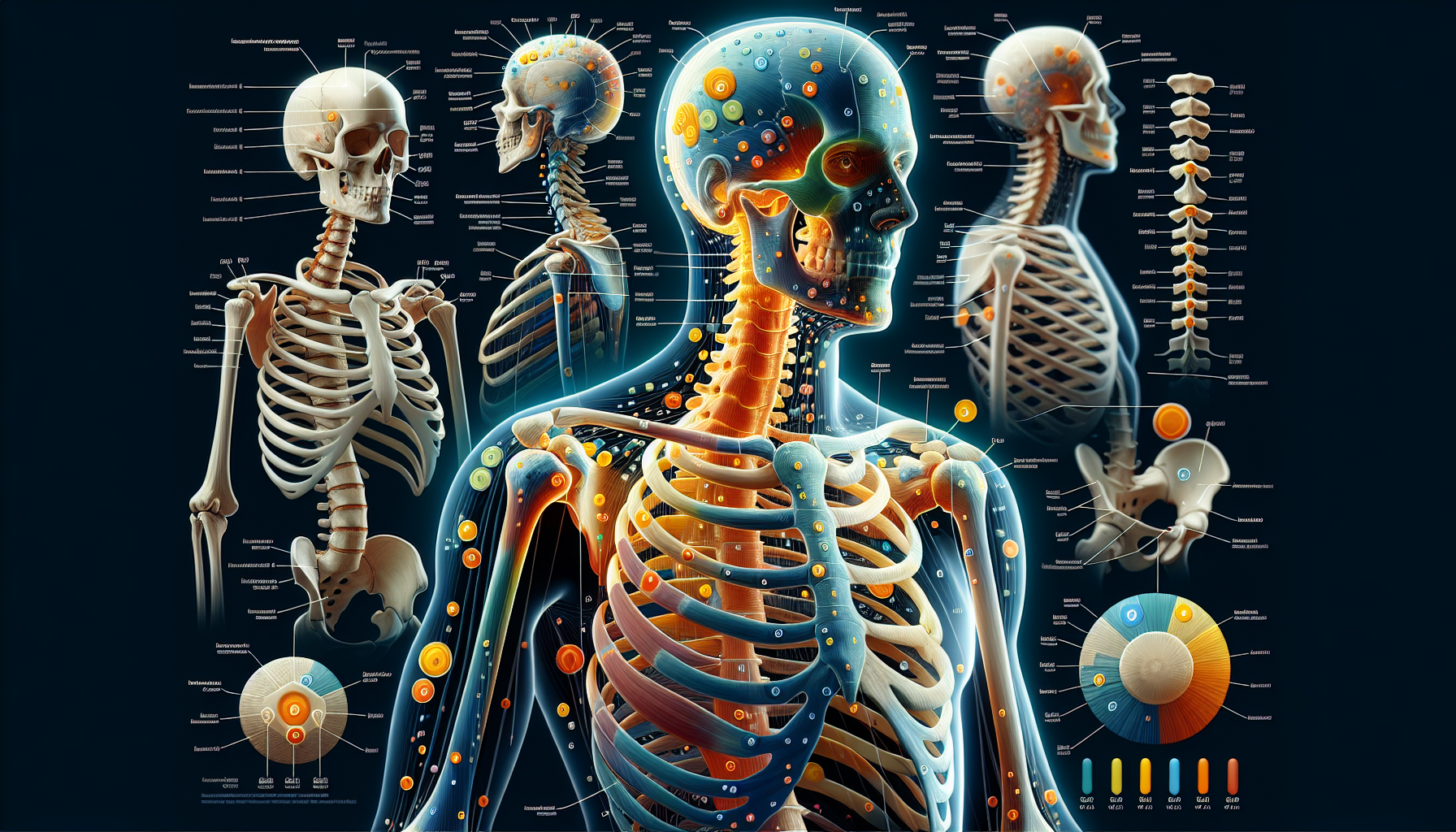Bone density is a crucial factor in determining the overall health and functionality of the skeletal system. It impacts not only the strength and durability of bones but also has significant implications for posture and mobility. As we age, bone density can decrease, leading to conditions such as osteoporosis, which can severely affect a person’s quality of life. Understanding the role of bone density in maintaining a healthy musculoskeletal system is essential for promoting longevity and mobility.
The Foundation of Bone Health
Bones are living tissue, constantly undergoing a process known as remodeling, where old bone is broken down and new bone is formed. The balance between these two processes determines bone density, which is the amount of bone mineral in bone tissue. Strong bone density is synonymous with strong bones, which are less likely to fracture or break.
Maintaining healthy bones requires a multifaceted approach, which includes proper nutrition, regular exercise, and the management of lifestyle factors that can impact bone health. For comprehensive insights into maintaining strong bones, Bone Health provides a wealth of information on the subject.
The Relationship Between Bone Density and Posture
Posture, the way we hold our bodies when we sit, stand, or move, is directly influenced by the strength and stability of our bones. Good posture aligns our bones and joints, allowing our muscles to work efficiently and reducing wear and tear on joint surfaces. High bone density contributes to better posture by providing a solid structure for the body to align itself correctly.
On the other hand, low bone density can lead to skeletal deformities, such as spinal curvature, which can cause poor posture. Poor posture not only affects appearance but can also lead to pain and reduced mobility. To delve deeper into the connection between joint health and bone density, the article Exploring the Link Between Joint Health and Bone Density offers an in-depth look.
Mobility and Bone Strength
Mobility is the ability to move freely and easily. Strong bones are essential for mobility because they support the body’s weight and work in conjunction with muscles to enable movement. When bone density is compromised, the risk of fractures increases, which can lead to immobility and a decrease in the ability to perform daily activities.
For those seeking to improve their mobility through exercise, particularly yoga, Evaluating the Benefits of Yoga for Bone Health is an informative resource that discusses how this ancient practice can strengthen bones and enhance mobility.
Factors Affecting Bone Density
Several factors influence bone density, including:
Nutrition
Calcium and vitamin D are essential for bone health. A diet lacking in these nutrients can lead to decreased bone density and increased risk of fractures. Other nutrients, such as magnesium, vitamin K, and phosphorus, also play a role in bone health.
Physical Activity
Weight-bearing exercises, such as walking and strength training, stimulate bone formation and can help prevent bone loss. Sedentary lifestyles, on the other hand, can contribute to decreased bone density.
Hormonal Changes
Hormones such as estrogen and testosterone are important for bone health. Menopause can lead to a drop in estrogen levels, which can accelerate bone loss in women. This is further discussed in the article Bone Health in Menopausal Women: Risks and Solutions.
Age
As people age, bone remodeling slows down, and the risk of losing bone faster than it is created increases, leading to lower bone density.
Genetic Factors
Ethnicity and family history can affect bone density. Some populations have higher bone mass, which can be protective against bone loss.
Medical Conditions
Chronic diseases, such as rheumatoid arthritis and certain endocrine disorders, can impact bone health.
Lifestyle Choices
Smoking and excessive alcohol intake can negatively affect bone density.
Strategies to Improve Bone Density
Improving bone density involves a combination of lifestyle changes, dietary adjustments, and possibly medical interventions. Here are some strategies:
Diet
Ensure a diet rich in calcium and vitamin D. Leafy greens, dairy products, and fortified foods are good sources. Supplements may be necessary for those who cannot get enough from their diet alone.
Exercise
Engage in regular weight-bearing and muscle-strengthening exercises to stimulate bone growth and improve balance.
Lifestyle Modifications
Quit smoking and limit alcohol consumption to support bone health.
Supplements
Consider taking calcium and vitamin D supplements, especially for those at higher risk of bone density loss.
Medications
In some cases, medications may be prescribed to prevent bone loss or increase bone density.
Monitoring and Diagnosis
Bone density can be assessed through various imaging techniques, such as dual-energy x-ray absorptiometry (DXA). Regular screenings are important, especially for those at higher risk of osteoporosis. For more information on the latest advances in this field, the article Advances in Bone Density Imaging Techniques provides an overview of state-of-the-art methods.
Conclusion
Bone density plays a vital role in maintaining posture and mobility. By understanding the factors that influence bone health and implementing strategies to improve bone density, individuals can maintain a higher quality of life and reduce the risk of fractures and mobility issues. It is important to consult healthcare professionals for personalized advice and to undergo regular bone density screenings. For those looking to expand their knowledge on bone health, the resources mentioned in this article, along with reputable external sources, can offer valuable information and guidance.



